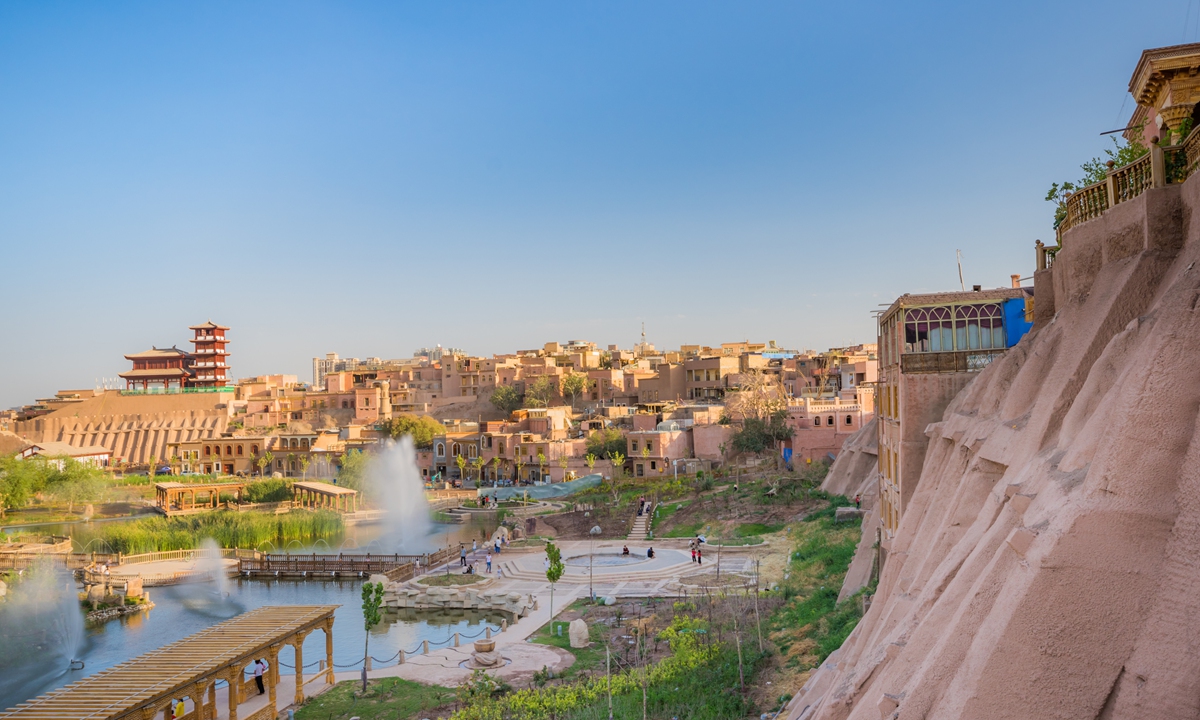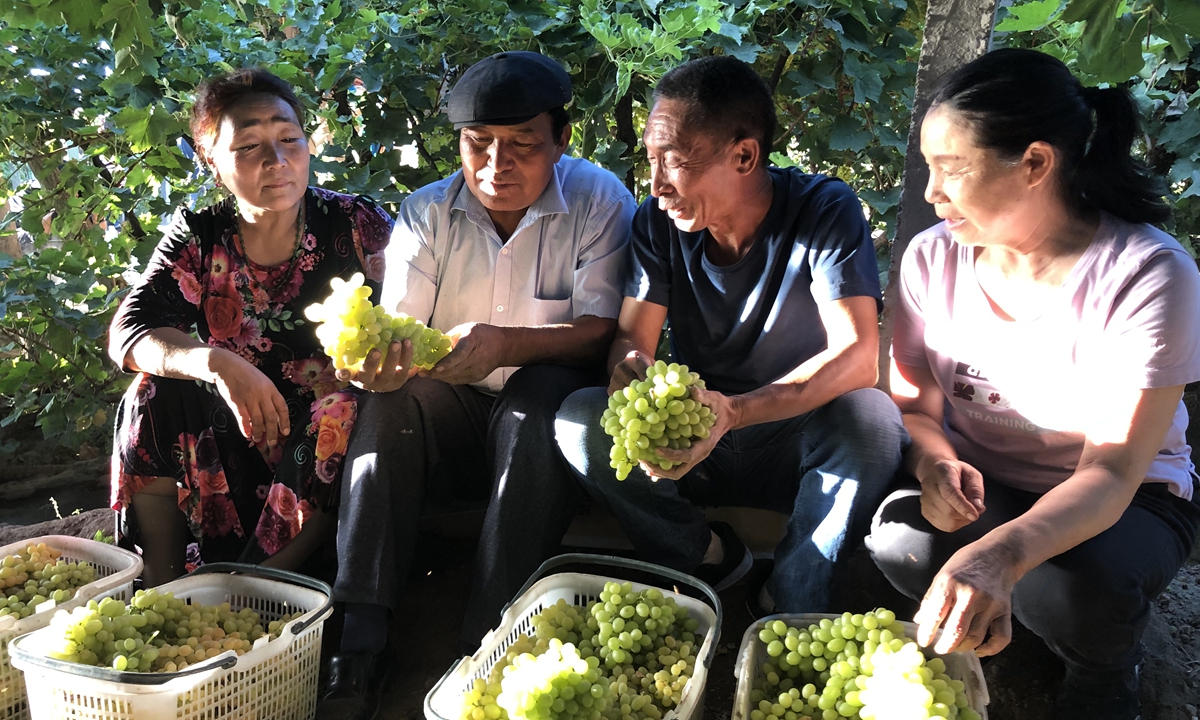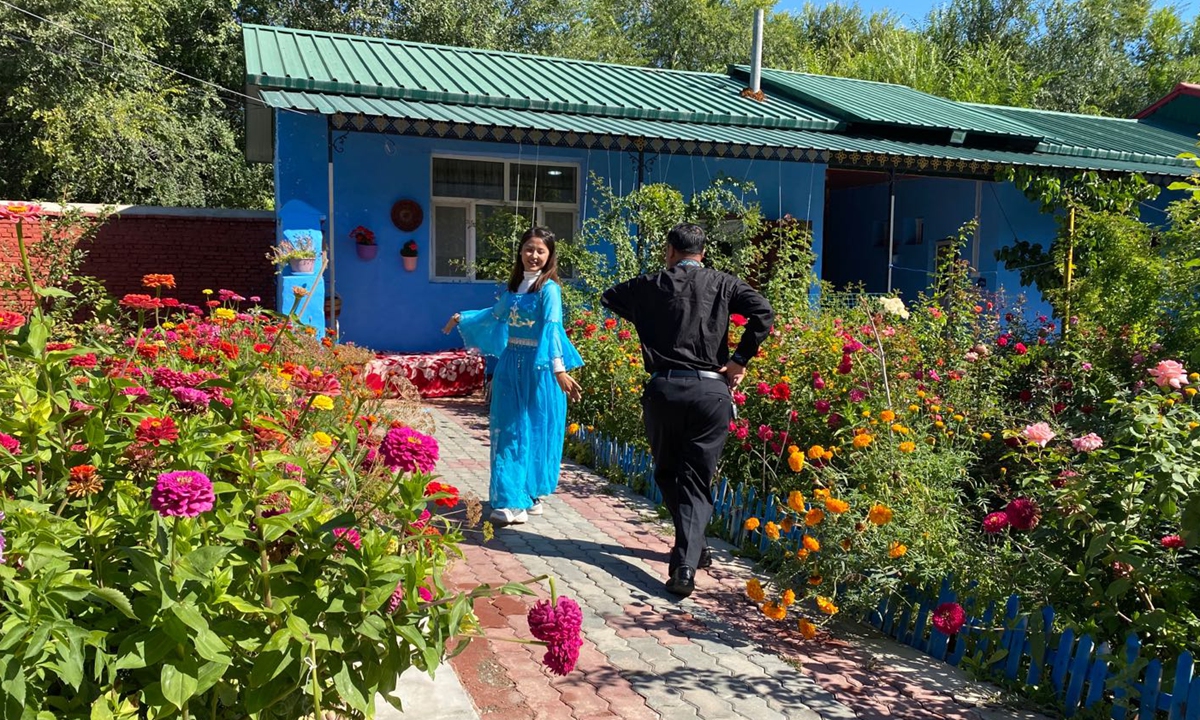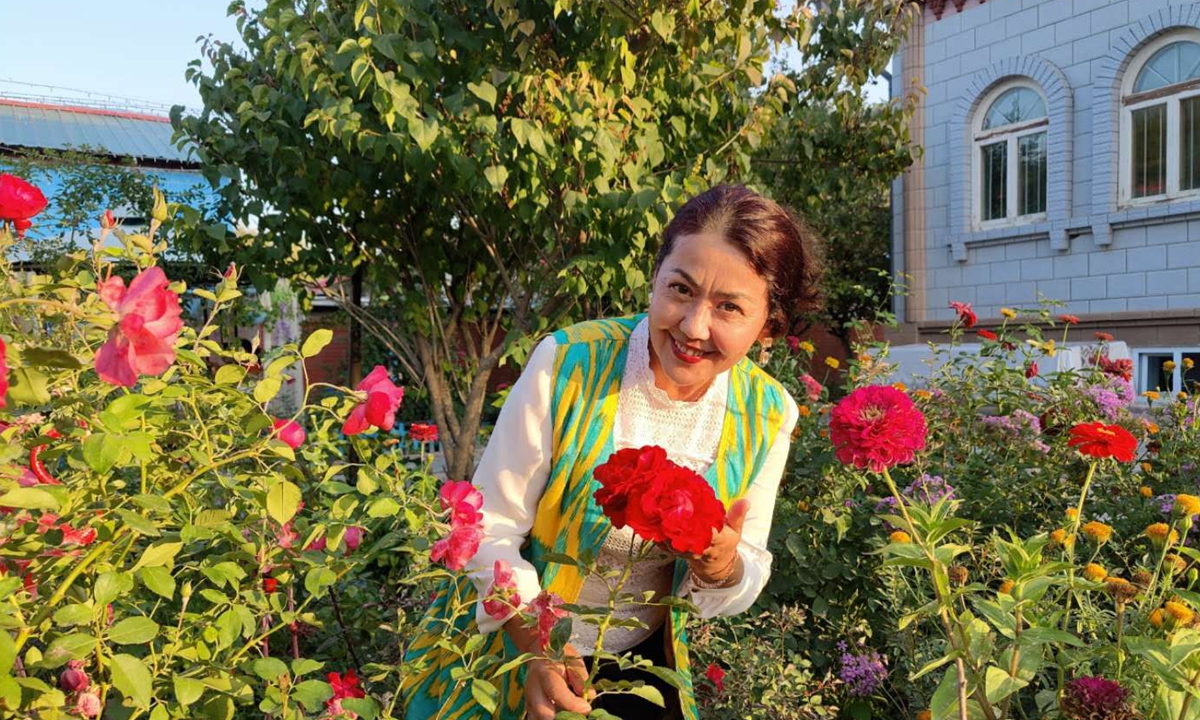Editor's Note:Xinjiang has been a multi-ethnic region since ancient times. Many different ethnic groups have entered Xinjiang over different periods, bringing technology, cultures and ideas, folk customs, and other aspects of their lives into the region. The region's history is one of economic and social development through exchanges and integration.
Currently inhabited by 56 ethnic groups, Xinjiang is one of the provincial-level administrative regions with the most ethnic groups in China. The Uygur, Han, Kazakh and Hui groups have populations of 1 million and above, and the Kirgiz and Mongol have populations of over 100,000. Today, Xinjiang, home to various ethnic groups, is an integral part of the Chinese nation.
The ethnic groups live together alongside each other. They are members of the same big family. In this family of the Chinese nation, the ethnic groups in Xinjiang are like brothers and sisters who work and live together and help each other out. They have guarded against foreign aggression, opposed separatist activities, and safeguarded national unification.

Scenery of Kashgar in Northwest China's Xinjiang Uygur Autonomous Region Photo: VCG
While busy cutting grapes and putting them into baskets, Zhang Xinbao and Memet Hanbdu chatted happily about this year's harvest. Other members of their two families were also working in the same vineyard, as it has become a ritual for them to help each other harvest and transfer grapes almost every year.
Born and raised in Qiaoketamu village of Turpan city in Northwest China's Xinjiang Uygur Autonomous Region, 53-year-old Zhang and 56-year-old Memet are "relatives," or to use their words, "brothers" - two people without kinship but with close ties. They have known each other since childhood, played together and even attended each other's weddings.
"We have known each other for decades and every year when festivals come, including the Spring Festival and Eid al-Fitr, we go to either his or my house to celebrate. Xiaobao is good at making dumplings," Memet said with a smile and calling Zhang by his childhood nickname.
"We all planted grapes this year, 14 mu (0.93 hectares) for me and nine mu for my brother Memet. If the market is good, we can earn more than 200,000 yuan ($29,291) this year!" Zhang said with a smile on his face.

Families of Zhang Xinbao and Memet Hanbdu chat during a break from harvesting grapes in the vineyard. Photo: Liu Xin/GT
Singing one song "All ethnic groups must embrace each other tightly like seeds of a pomegranate." These are the words on a particularly eye-catching slogan at the highway toll station entering Hoxud county, Bayingolin Mongol Autonomous Prefecture in the southeast of Xinjiang.
The county has a total population of approximately 66,200 people, of whom 24,000 are from ethnic groups including the Uygur, Mongolian, Hui and others. The county was recommended by Bayingolin as a demonstration county of national unity and progress in 2020.
"We have always taken strengthening the unity of people of all ethnic groups as strategic and fundamental work," said Zhang Feng, secretary of the Party committee of Hoxud county.
Villagers in Tewulike town, Hoxud county, held an ethnic unity party on September 8, the first after the latest wave of the epidemic outbreak in Xinjiang ended. A group of people from the Mongolian ethnic group sang My Country and Me, a popular song among the Chinese public that expresses patriotism. They sang it in the Mongolian language, drawing warm applause. He Dong, secretary of the Party committee of Tewulike town, told the Global Times that these kinds of parties are usually organized once a month. "Villagers who perform and watch both like it very much. Everyone enjoys it together," He said.
In Tewulike town, people from different ethnic groups live and work together, and have established deep bonds through helping each other. Some 31 years ago when Hu Shounian, an ethnic Han from Sichuan Province, migrated to Xinjiang with his daughter and grandson, he lived in a shabby tent in front of Hetiram Eli's house. Although Hetiram's family was not rich at that time, she and her husband let Hu's daughter and grandson live in their house and use their kitchen for cooking. Since then, the two families from different ethnicities have developed a close friendship, supported each other in difficult times, and maintained close relations to this day.
Hetiram, now retired, told the Global Times that when she was working, her colleagues would take care of her children if she got ill. "We help each other when there are difficulties, regardless of ethnicity," Hetiram said.

A woman from the Dongxiang ethnic group and a man from the Uygur ethnic group dance together in rose garden in Tacheng on September 13. Photo: Cao Siqi/GT
Love for country Shalkjan Yiming, a 74-year-old Uygur, raises the Chinese national flag during every major festival in his small courtyard. His neighbors from various ethnic groups gather there, saluting the flag and singing the national anthem.
On September 13, Shalkjan shared his story with a visiting Global Times reporter. On October 1, 2009, he made an important decision: he would raise the Chinese national flag in his courtyard to fight against secessionists who had harmed Xinjiang residents' lives and damaged national unity.
"I did several rehearsals the first time. Matching the song and the flag-raising was the most difficult part. But I can still remember that this was the most glorious and happiest moment in my life," he told the Global Times. "I want to turn my courtyard into a patriotic place and plant the seeds of love for our country into the hearts of the young generation."
Shalkjan has maintained this tradition for the past 10 years. "The first time I raised the national flag, about 70 people came and joined me. In 2019, over 30,000 residents and officials from different ethnic groups have come," he said.
In his courtyard, the Global Times reporter also met several of his neighbors who are of the Kazakh, Mongolian and Uygur ethnic groups.
They told the Global Times that in the residential community where they live, which is called the Hardun community in northern Tacheng Prefecture, there are 3,821 residents in 1,510 households, consisting of 14 ethnic groups such as Han, Kazakh and Uygur. People from ethnic minority groups account for 66.69 percent of the total population. The number of families formed by two or more ethnic groups has reached 274, accounting for more than 30 percent of the total.

Halida Yelahun Photo: Cao Siqi/GT
"As we have lived for a long time, we can understand each other's languages, are accustomed to each other's food, and dance to each other's songs," Halida Yelahun, the owner of a rose garden, told the Global Times. The rose garden is in Halida Yelahun's private house in the Hardun community and also serves as a guesthouse taking in tourists.
Halida Yelahun is a Uygur, but can cook many ethnic foods, including Han, Uzbek, Tatar and Kazakh cuisine. According to Halida Yelahun, there are 42 people in her big family. She is married to an Uzbek man, her elder sister is married to a Tatar man and her younger sister is married to a Kazakh man. Halida Yelahun said she also has a Han "brother."
In Halida Yelahun's eyes, Tacheng is a museum of Xinjiang's ethnic customs, an exhibition hall of Xinjiang's folk customs, and a paradise of ethnic integration. "We are one family," she said.







